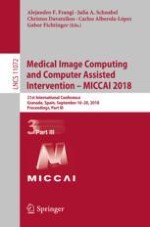2018 | OriginalPaper | Buchkapitel
Brain Decoding from Functional MRI Using Long Short-Term Memory Recurrent Neural Networks
verfasst von : Hongming Li, Yong Fan
Erschienen in: Medical Image Computing and Computer Assisted Intervention – MICCAI 2018
Aktivieren Sie unsere intelligente Suche, um passende Fachinhalte oder Patente zu finden.
Wählen Sie Textabschnitte aus um mit Künstlicher Intelligenz passenden Patente zu finden. powered by
Markieren Sie Textabschnitte, um KI-gestützt weitere passende Inhalte zu finden. powered by
